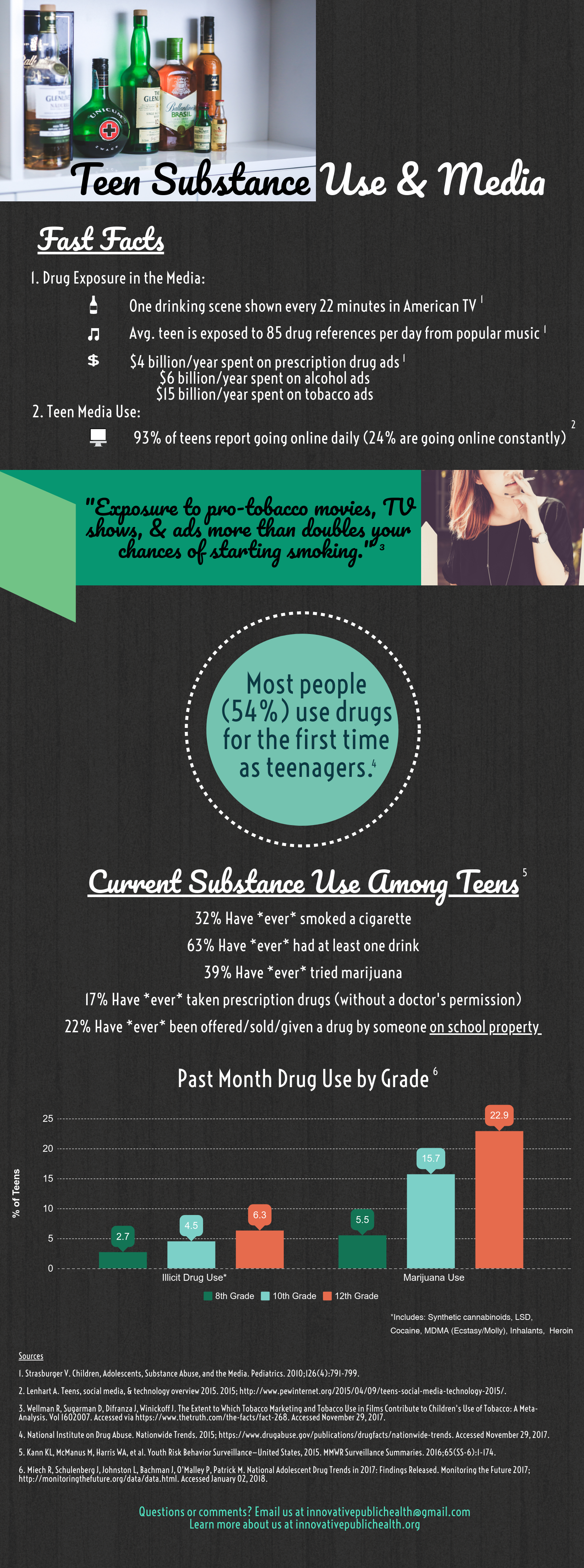If you could peek into the late night Snapchats teens send to each other, memes they tag each other in, or Instagram stories they post, all of their references to drinking and smoking may give you the impression that teen substance use is on the rise. National data suggest the opposite however: overall, teen drinking, smoking, and drug use has declined in the past couple decades [6]. For example, in 1997, over 65% of 10th graders in the U.S. reported drinking alcohol at least once in the past year, and in 2017, that rate dropped to under 40% of 10th graders [6]. Those teens who are drinking are doing so less frequently: daily alcohol consumption in 10th graders dropped significantly in the last 5 years [6].
While there is reason to feel good about how our kids are doing today compared to previous generations, there is more work to be done to reduce substance use. For instance, about 1 in 17 high school seniors reports daily marijuana use [6].
In thinking about what we as parents and other adults who care about youth can do to help curb teen substance use further, we must consider which factors are influencing and encouraging this potentially risky behavior. One of the possible culprits is the prolific and glamorized use of drugs in the media, including alcohol and cigarette ads [3]. As you probably know, the vast majority of American youth are spending quite a bit of time online, where they are likely viewing a proliferation of drug and alcohol references [2]. And, this consumption may matter. A lot, in fact. In looking at 12 recent studies of teen alcohol use and exposure to alcohol marketing, researchers at the Center on Alcohol Marketing and Youth (CAMY) found a strong connection between high intake of alcohol-related ads and binge-drinking behaviors [7].
This infographic displays the current rates of alcohol, tobacco, and other drug use by teenagers across the United States. It also highlights how often alcohol, tobacco, and other drug references appear in various forms of media. These statistics make clear that we must encourage the teens in our lives to think critically about how media uses different strategies to try to influence their behavior. Healthy consumer skepticism will help all of us to make healthy choices in our own lives.

References
- Strasburger V. Children, Adolescents, Substance Abuse, and the Media. 2010;126(4):791-799.
- Lenhart A. Teens, social media, & technology overview 2015. 2015; http://www.pewinternet.org/2015/04/09/teens-social-media-technology-2015/.
- Wellman R, Sugarman D, Difranza J, Winickoff J. The Extent to Which Tobacco Marketing and Tobacco Use in Films Contribute to Children’s Use of Tobacco: A Meta-Analysis. Vol 1602007. Accessed via https://www.thetruth.com/the-facts/fact-268. Accessed November 29, 2017.
- National Institute on Drug Abuse. Nationwide Trends. 2015; https://www.drugabuse.gov/publications/drugfacts/nationwide-trends. Accessed November 29, 2017.
- Kann KL, McManus M, Harris WA, et al. Youth Risk Behavior Surveillance—United States, 2015. MMWR Surveillance Summaries. 2016;65(SS-6):1-174.
- Miech R, Schulenberg J, Johnston L, Bachman J, O’Malley P, Patrick M. National Adolescent Drug Trends in 2017: Findings Released. Monitoring the Future 2017; http://monitoringthefuture.org/data/data.html. Accessed January 02, 2018.
- Jernigan D, Noel J, Landon J, Thornton N, Lobstein T. Alcohol marketing and youth alcohol consumption: a systematic review of longitudinal studies published since 2008. 2017;112:7-20.
